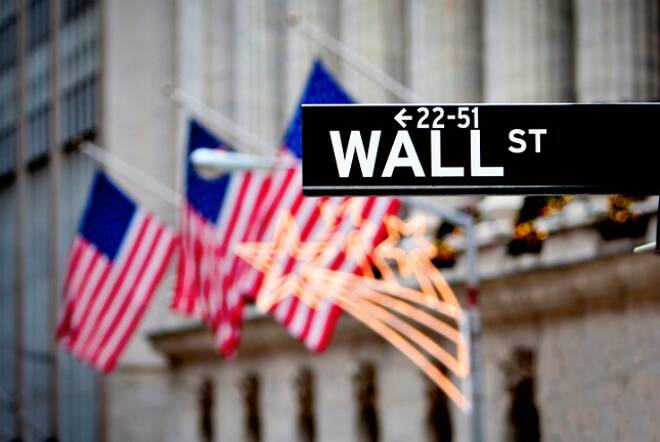Advertisement
Advertisement
S&P 500; US Indexes Fundamental Weekly Forecast – Climbing Steadily but Still Facing Headwinds
By:
Near-term risks include trade issues, geopolitical risks and stronger-than-expected inflation. Trade war concerns are likely to affect the Dow and S&P more than the NASDAQ. Geopolitical risks carry the element of surprise that could lead to sudden liquidation and a move into safe-haven assets. Finally, it is possible that the Fed is moving too slowly in combating the threat of rising inflation.
The major U.S. equity indexes closed higher last week, led by the Dow which posted its best weekly gain since the week-ending March 9. Stocks were underpinned by solid economic data including the previous week’s robust U.S. Non-Farm Payrolls data and last week’s Purchasing Managers’ Services Index (PMI) hitting a three-year high.
In the cash market, the benchmark S&P 500 Index settled at 2799.03, up 1.6%. The blue chip Dow Jones Industrial Average finished at 25316.53, up 2.8% and the tech-based NASDAQ Composite ended the week at 7644.91, up 1.2%.
For the year, the S&P 500 Index is up 3.9%, the Dow is up 2.4% and the NASDAQ has gained 10.8%.
Essentially, U.S. stocks continued to rebound from the volatile correction that took place in early February. The benchmark S&P 500 Index, for example, is up 7.5% from its February low and trading within 3.4% of its high for the year.
In hindsight, despite the steep losses at the time, it looks like the sell-off served as a wake-up call for investors who had gotten too complacent. While the NASDAQ Composite has pushed on to nearly new highs for the year, the S&P and the Dow are still straddling the middle of a six-month range. This is because of the pessimistic view by some due to interest rate uncertainty trade negotiation uncertainty. Optimistic investors, on the other hand, seem to be dealing with the same issues a little differently by taking it one day at a time.
Forecast
Stock investors face a mountain of information this week highlighted with May’s inflation report Tuesday, a rate decision from the U.S. Federal Reserve Wednesday, and retail sales Thursday.
The Consumer Price Index is expected to show a monthly increase of 0.2%. Core CPI is expected to rise 0.1%. Producer inflation is expected to jump 0.3%, up from April’s 0.1% rise. These reports are not expected to change the outcome of the Fed’s rate decision on Wednesday. The central bank is widely expected to raise its benchmark rate 25 basis points.
Retail Sales are expected to come in at 0.4%, up from 0.3%. Core Retail Sales are expected to rise 0.3%, matching the previous gain.
Stock investors have fully-priced in the June rate hike. However, there is still some uncertainty over future rate hikes. Traders aren’t sure if there will be one or two more rate hikes after that. Investors will be looking for clues about the Fed’s next interest rate moves in the Federal Open Market Committee’s Monetary Policy Statement, Economic Projections and Press Conference.
As far as Trump’s meeting with Kim Jong-un, it’s too hard to tell how the outcome will influence stocks prices. Obviously, if there is a so-called “peace agreement” then this will enhance the appeal of risky assets. However, I think stock traders will be paying closer attention to the Fed than to the meeting.
Over the near-term, the positives are going to continue to be the strong economy, strong earnings and sales growth.
Near-term risks include trade issues, geopolitical risks and stronger-than-expected inflation. Trade war concerns are likely to affect the Dow and S&P more than the NASDAQ. Geopolitical risks carry the element of surprise that could lead to sudden liquidation and a move into safe-haven assets.
Finally, it is possible that the Fed is moving too slowly in combating the threat of rising inflation. If the low unemployment rate, for instance, sparks a rapid rise in wages, inflation could spike above the Fed’s 2 percent target and this could force the central bank to become more aggressive with its rate hikes. This is something that would not be well-received by stock investors.
About the Author
James Hyerczykauthor
James is a Florida-based technical analyst, market researcher, educator and trader with 35+ years of experience. He is an expert in the area of patterns, price and time analysis as it applies to futures, Forex, and stocks.
Did you find this article useful?
Latest news and analysis
Advertisement
